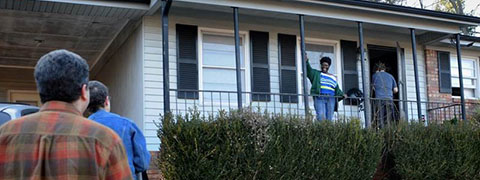Moments in Disability History 19
From the Least Restrictive Environment (LRE) Through the ADA Title II to the Most Integrated Setting
Litigation in the 1950s, 1960s and 1970s questioned both the purpose of institutions and the confinement of people in institutions, and progressively led to the Americans with Disabilities Act (ADA) language that the United States Supreme Court was later to use in the Olmstead decision – declaring that to needlessly confine a person in an institution is segregation, that segregation is discrimination, and the ADA forbids such discrimination.
It began in 1954 with Brown vs. the Board of Education, the civil rights case that established the principle that school segregation denied students an equal educational opportunity. The United States Supreme Court held that separate was not equal, and although the Brown decision referred to racial segregation, it began to influence thinking about people with disabilities. In the aftermath of Brown, a number of subsequent court challenges held that people cannot be confined to institutions if less restrictive measures could be taken to keep them safe in the community. The concept of "least restrictive environment (LRE)" then began to find its way into court decisions in the late 1960s and early 1970s. From there, the concept continued to evolve.

Brown vs. the Board of Education
During the 1980s, advances in assistive technology and services, coupled with a values base, advanced the notion that people with disabilities be included in society. The concept of inclusion was based on the premise that all individuals with disabilities had a right to participate and not just be present in the community, in activities with their neighborhood peers, siblings, and friends. Least restrictive was not enough; more was required.
Following the passage of the ADA in 1990 and as directed by Congress, the United States Attorney General issued regulations implementing Title II that are based on the regulations issued under section 504 of the Rehabilitation Act. The Title II regulations require public entities to "administer services, programs, and activities in the most integrated setting appropriate to the needs of qualified individuals with disabilities." The preamble discussion of the "integration regulation" explains that "the most integrated setting" is one that "enables individuals with disabilities to interact with nondisabled persons to the fullest extent possible…"
The language of full integration, the integration mandate, was then incorporated into the ADA by virtue of these regulations and reflected in the Olmstead decision.

David Ferleger
Stephen F. Gold is the foremost attorney in the disability rights movement. As attorney for Idell S. and Helen L., he sued and won against the state of Pennsylvania on the basis of the ADA for unnecessarily segregating people in nursing homes rather than providing them with attendant services in their own homes. In this video, attorney Gold discusses the transition to the most integrated setting language in the ADA that was reflected in the Olmstead decision.

Stephen Gold
In 2014, in partnership with TPT, Minnesota Public Television, two products were developed. The documentary Independence to Inclusion, addresses the stigmas and stereotypes about people with developmental disabilities that still persist but also speaks to the inroads being made to counter those perceptions and attitudes.
Dr. Patrick Schwarz, a professor at National-Louis University, Chicago, is also an author, motivational speaker and leader in inclusive education. He describes the movement of a student from a least restrictive environment to an inclusive education classroom.
In commemoration of the 15th Anniversary of the Olmstead decision, I Am Olmstead tells the stories of individuals who are living independently in the community and have benefited from Olmstead. Their stories can be viewed at The I Am Olmstead Facebook page

This is what "most integrated setting" is all about.
Here, Lois Curtis is welcoming friends at her house, when she wants!
The Disability Justice Resource Center, an online collection of resources for the legal community, was created to help them better understand the justice related issues that face individuals with disabilities, particularly individuals with developmental disabilities.





